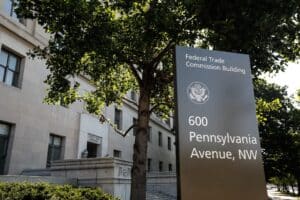Does SCOTUS ❤️ political accountability?

Happy Thursday, SCOTUS Lovers.
There weren’t any arguments over the past two weeks, but here’s a quick update on what else was happening at the marble palace that never sleeps.
Political accountability is for lovers
On Valentine’s Day, the Trump administration asked the justices to weigh in on the president’s power to remove executive branch bureaucrats. (Cue the obligatory “you’re fired” reference). This comes after Trump fired the head of the Office of Special Counsel (OSC)—an agency that investigates government wrongdoing—as well as two Equal Employment Opportunity commissioners and one National Labor Relations Board member despite statutes limiting his ability to do so.
Hampton Dellinger, the Biden-appointed head of the OSC, argues that federal law says he can only be fired for “inefficiency, neglect of duty, or malfeasance in office,” none of which were cited in Trump’s email letting him go. Trump argues that the removal restrictions are unconstitutional. A federal district court issued a Temporary Restraining Order reinstating Dellinger before the government even had a chance to respond to the lawsuit and the DC Circuit refused to lift that order, leading Trump to ask the Supreme Court to intervene.
You might think that the president has broad discretion to fire the heads of executive agencies. After all, the Constitution vests all executive power in the chief executive and charges the president with “taking care that the laws are faithfully executed.” If Congress limits the president’s removal power, it arguably upsets the separation of powers and blurs the lines of political accountability. When the president has no power to remove agency heads, the public has no political recourse should it disagree with agency decisions.
However, in the 1930s, the Supreme Court blessed Congress’s practice of insulating executive officials from removal by the president. In a case called Humphrey’s Executor, the Court upheld a law that granted removal protection to Federal Trade commissioners on the theory that the officials wielded “quasi-legislative” and “quasi-judicial” power, and removal protection was thus necessary for the officials to enjoy a measure of independence from the president.
The question, however, is whether the Constitution permits such independence. Its text and structure offer the public a clear path for exercising political accountability. If an agency enforces a law in a way the public doesn’t like, voters should be able to take action by complaining to/voting against/criticizing the president—and the president can choose whether to remove the agency head. But if the president has no power to remove, then the lines of political accountability are blurred (if not erased). Allowing Congress to create “independent” agencies within the executive branch also undermines the separation of powers.
In recent years, the Supreme Court has walked back its stance on removal protections. In Seila Law v. CFPB, the Court ruled that Congress could not insulate agency leadership from removal when it consists of a single agency head that wields quintessential executive power. Looking at history and tradition, as well as the structure of the Constitution, Chief Justice Roberts reasoned that “[t]he Framers’ constitutional strategy is straightforward: divide power everywhere except for the Presidency, and render the President directly accountable to the people through regular elections. In that scheme, individual executive officials may wield significant authority, but that authority remains subject to the ongoing supervision and control of the elected President.” Justice Kagan however, in dissent, asked whether this conclusion was “more than the [Constitution’s] text [could] bear.”
Seila Law at least refused to extend Humphrey’s Executor. The question now is whether the Court will reverse it entirely.
Removal protections have long been a target of those who see the administrative state as run amok. In addition to things like judges deferring to the other branches, in-house agency adjudication rather than independent courts, and lack of due process, “independence” (or, put another way, unaccountability) has led to an explosion of the administrative state. Bureaucrats now regulate everything from, as my colleague Elizabeth Slattery has pithily and accurately put it, “gas stoves to Greek yogurt.” Some posit that Trump was picking this very legal fight by defying Congress’s removal protections and firing the agency officers.
It remains to be seen whether the Supreme Court will jump in this early. Special Counsel Hampton Dellinger argues that there’s no need for the Court to weigh in now on an emergency basis. The district court order, he says, merely maintains the status quo while litigation proceeds on an expedited basis. But whether now or later, at some point the Court will be forced to reckon with the legacy of Humphrey’s Executor and our behemoth administrative state.
You want to hear a really great podcast on this? Check out Dissed.
What’s next
Oral arguments resume on Monday. One of the more interesting cases involves the Mexican government’s attempt to sue leading members of the American firearms industry for harms inflicted by Mexican drug cartels.
See you back in two weeks.












